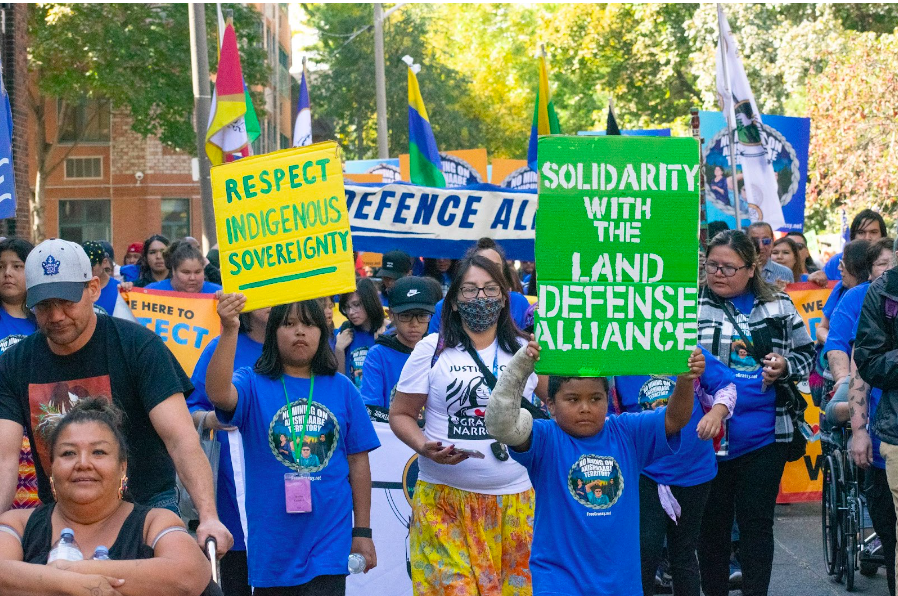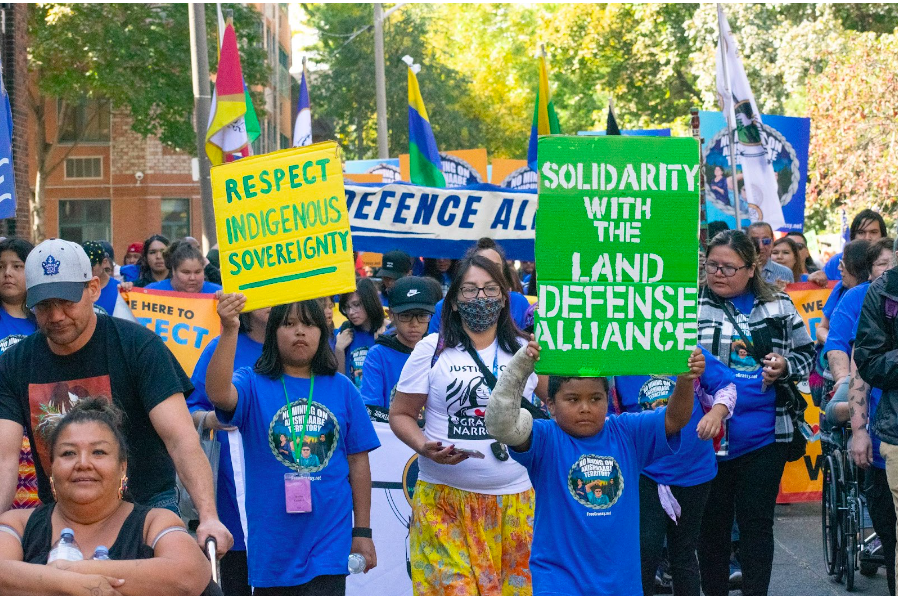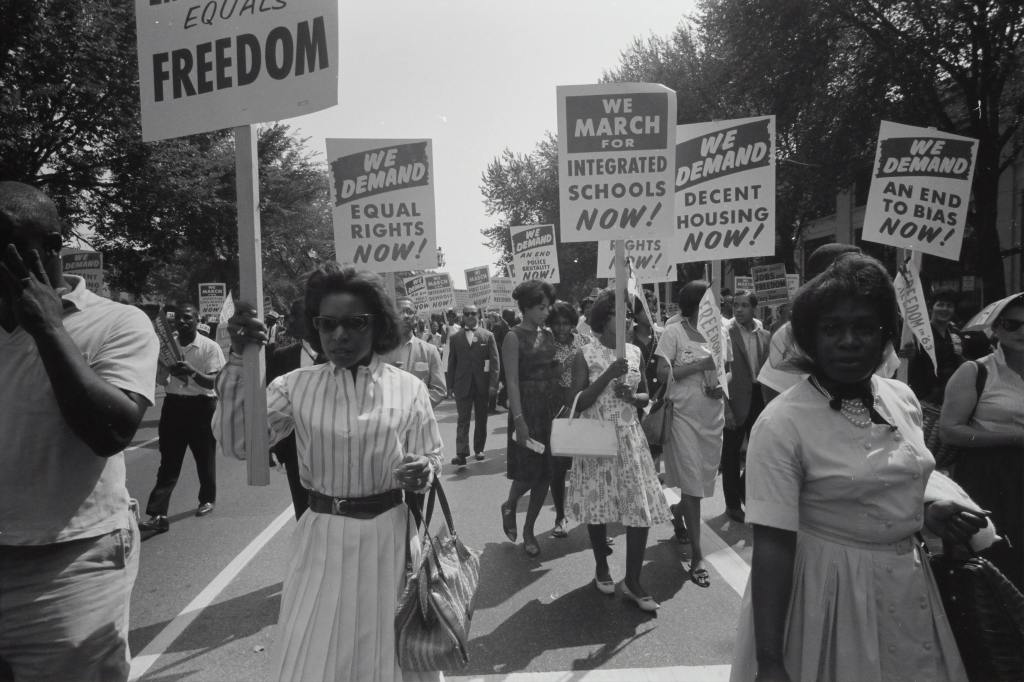OUR RESPONSE TO ANTI-BLACK & ANTI-INDIGENOUS RACISM

PRINCIPLES FOR ACTION
-
- Clearly name the problem
-
- Be honest and vulnerable
-
- Create a safe space for conversation
-
- Listen
-
- Share stories
-
- Use data
-
- Let Black members of the congregation take a lead
-
- Use the arts
-
- Set realistic goals and ideas for what we want to accomplish and ensure that these ideas and activities are something we can commit to on a continual basis
ACTION AREAS
1. Education
-
- Stories from Black folks
-
- History of Blacks in Canada
-
- Problems with policing
-
- Film series
-
- Book studies
-
- Lecture series
-
- Caucus groups—spaces for BIPOC people to do reflection and processing together, as well as finding spaces for white people to do this work on their own too, in order that when we come together to dialogue, there is increased capacity for understanding
2. Communication
-
- Articulate a clear Christian liberation stance against anti-black racism and colonial policing!
-
- Arts-based communication, signage
-
- Messaging to the wider church—more diversity!
3. Liturgy
-
- Honour significant dates in Black history, beyond just February
-
- Honour Indigenous culture throughout the year
-
- More story sharing
-
- Anti-racist and decolonial liturgical expressions

4. Connecting to the community
-
- Use anti-racism as a way to connect youth
-
- Partner with other groups who are active
-
- Mentorship programs, networking opportunities
-
- Encourage financial givings to particular organizations committed to doing anti-racist work—maybe somewhere in the neighbourhood
-
- Organize opportunities for anti-racist protest participation as an ESM community—maybe gathering together for marches and vigils, but maybe also finding ways to use the location/property of the church for anti-racist messaging
-
- Building relationships with our Indigenous communities


To build relationships we will work to increase an appreciation of the teachings, languages, traditions and stories of the Ancestors that are shared in the podcast series “Sacred Teachings” of the Anglican Church of Canada. https://www.anglican.ca/im/podcasts/
We will hold information sessions to introduce participants to “the Sacred Teachings” Podcasts, Virtual Pow Wows; 2015 Sacred Circle: Gospel: Jamboree; As well, we will provide participants with links to these media.
Once we are no longer practicing social distancing, we will organize a bus trip to Six Nations (Brantford), the Oneida of the Thames, or Christian Island to meet with Indigenous leaders to listen to and learn about their communities—past and present.
Exploring Black History with the Rev. Canon Claudette Taylor

There is so much rich history of Blacks in Canada that it is difficult to decide where to start.
Blacks began arriving mostly as single men in Western Canada as traders or cowboys before 1870. John Ware, an important figure in Alberta, was born a slave around 1845 – 1850 in South Carolina. After the Civil War, he moved to Texas, learned to be a rancher and in 1882 arrived in Alberta on a cattle drive remaining there until his death in 1905. He started his own successful ranch near Red Deer River after working for other ranches. As a master horseman, he is part of folk lore. Stories of his exploits are part of Alberta’s cowboy legends. “Born into slavery, he worked his way to being one of the most-well respected figures on the Albertan frontier, and many of his methods are still influencing the Calgary Stampede.
The Canadian Government’s offer of 165 acres of land for $10 and a promise to cultivate the land, was made to encourage settlement in the Prairies. Blacks from Oklahoma, Texas and other southern states moved to Albert and Saskatchewan to escape the violence and discrimination in the United States and in response to this offer. On their arrival, they did not receive the welcome they expected. “The Canadian Government never proposed any direct legislation against black immigrants for fear of tainting their public image or damaging their relationship with the United States.” However, as the numbers of Blacks seeking to come to the west increased, the government took more direct measures to restrict immigration. These included the excuse of unfavourable climate, strict economic and physical standards for Black immigrants and misinformation about the quality of the soil. The government of Prime Minister Wilfred Laurier restricted Black immigrants from entering the country for a year. This action according to Cheryl Foggo, a descendant of the immigrants to Saskatchewan and an author, playwright, and filmmaker in Calgary, ended the migration. Several communities were formed in Western Canada and included Amber Valley, about 170 kilometers north of Edmonton was one of the largest settlements in Western Canada. According to the Canadian Encyclopedia, there were about 1,000 inhabitants by 1911. Other communities included Wildwood (120 km from Edmonton, Breton (110 km. southwest from Edmonton), Campsie (145 km. north west of the city) and the Maidstone area, about 480 km northwest of Regina, in Saskatchewan. It took more than 100 years for the community of Amber Valley to be recognized with a stamp (see photo above). It is important for their stories to be told as Black families who settled in Canada brought rich cultural traditions and left a legacy of incredible contributions. (Foggo) Oliver Bowen was born in Amber Valley on December 21, 1942 and died on January 1, 2000 in Calgary. Oliver’s father, Obadiah Bowen, came at age 2 to Alberta from Oklahoma with his parents in 1909. Oliver grew up in Amber Valley where both his father and grandfather were prominent leaders in the community. An Engineer, Oliver is recognized for managing the design and construction of the first line of Calgary’s light rail transit system. A light rail transit maintenance facility was named in his honour. (Wikipedia)
Another famous person with roots in this community was The first Lady of Jazz, Eleanor Collins, born Elinora Proctor on November 21, 1919. Her parents were part of the migration of Black settlers from Oklahoma. She moved to Vancouver in 1939, married Richard Collins had 4 children and in 1945 worked in music at CBC Radio. Later that year, she was invited by Ray Norris, CBC Radio Studio musician for form a Quintet where she was the featured vocalist. Eleanor had acting roles in the Vancouver Production of You can’t take it with you,” “Kiss me Kat,” and “Finian’s Rainbow.”
She is best remembered in her television roles. She was a Black pioneer in her field and her first included: the first live musical variety series in Vancouver, her show Bamboula was one of the first shows to feature an interracial cast, the first music performer to have a show named after her, the first Black music artist in North America to host her own national TV series. Her show predated the 1956 Nat King Cole Show. Eleanor performed at age 95 to a live audience and at age 100 was still living at her home. I cannot find any record of her death.
Her awards include investiture into the Order of Canada at 95, the Centennial Distinguished Award, Induction into the BC Entertainment Hall of Fame, the Lifetime Achievement Awards from Actra’s Sam Payne Award, , the Black Women in Jazz Awards in Atlanta, Georgia.
Despite the many achievements and awards, Eleanor faced many barriers. One of them was when she and her family moved into a white neighbourhood in Burnaby. As the only black family, she was also a face and faced discrimination. A petition from their neighbours was unsuccessful. Instead of letting that challenge stop her, she continued not simply to rise but to soar.
For hundreds of years Blacks have contributed much to the fabric of this country and yet their achievements and contributions are not well-known or recognized. Canada has had Blacks on its shores long before Confederation. In 1608 an African Mathieu de Coste became the first recorded Black person to arrive in Canada. He had come to serve as interpreter of the Mi’kmaq language to the governor of Acadia. In the 17th and 18th centuries Acadia or Acadie (in French) belonged to France and included southeastern Quebec (the Gaspe), eastern Maine, New Brunswick, Nova Scotia, and Prince Edward Island. In 1628, Olivier LeJeune was recorded as the first enslaved African to live in New France. Since that time, Black people have arrived from the United States as Black Loyalists, as Freedom Seekers, as entrepreneurs trying to take advantage of the offer of free land in Saskatchewan to begin settlements there. We must not forget the Draft Dodgers who escaped north to avoid fighting in the Vietnam War. They have come from the Caribbean and other parts of the diaspora and from Africa. We celebrate these pioneers and continue to tell these stories as part of our commitment to educating ourselves about these people.
William Hall, VC
William Hall grew up on the banks of the Avon River. His father, one of the black refugees brought to Nova Scotia during the War of 1812, became a sailor and worked at the shipbuilding yards at Half-Way River (Hantsport). In 1844 young William joined the crew of a vessel sailing out of Half-Way River, and during the late 1840s he apparently served in the American navy. Hall enlisted in the Royal Navy as an able seaman in February 1852, and was in the battleship Rodney for four years. During the Crimean War he took part in the siege of Sevastopol (Ukraine) as the captain of a gun in the siege batteries, and was present at the battle of Inkerman. In 1856 he was assigned to the frigate Shannon which was sent to Calcutta when the Indian Mutiny broke out in 1857 and then to the relief of Lucknow, then besieged by mutineers. He secured the British garrison in Lucknow and was one of two sailors to survive the attack but the only one able to continue to fight. He fought until the garrison was safe.
Hall was presented with the award on 28 Oct. 1859, the first black, the first Nova Scotian, and the first Canadian sailor to receive the decoration. By that time he had become captain of the foretop. Hall retired on 10 June 1876 with the rank of quartermaster and a certificate of good conduct, and he settled on the family farm near Hantsport. When interviewed in 1900 the ageing man thought little of his glories or the Victoria Cross. As he said, “It isn’t worth very much . . . after all, only ten pounds a year. If it wasn’t for my regular navy pension of forty pounds a year besides, I don’t know how we’d get along here. The farm is small, and my two sisters live with me.” In October 1901 he emerged briefly from obscurity when he was presented to the Duke and Duchess of Cornwall during their visit to Halifax. Upon his death in 1904, Hall was buried without honours at Lockhartville. In 1945 his remains were reinterred in the grounds of the Hantsport Baptist church, and in 1947 a commemorative cairn was erected by the Canadian Legion on land it had purchased. The cairn is one of a number of memorials, several of them created by the black community of Nova Scotia, which perpetuate the name of William Hall, vc.
Bridglal Pachai, “HALL, WILLIAM (1829-1904),” in Dictionary of Canadian Biography, vol. 13, University of Toronto/Université Laval, 2003–, accessed February 11, 2021, http://www.biographi.ca/en/bio/hall_william_1829_1904_13E.html.
https://www.cbc.ca/news2/interactives/black-history-month/
Most of us do not know of the great men and women who made significant contributions to Canada and the rest of the world. We do not know of the great kings and queens and the great kingdoms that they possessed– societies and governments–models which were later adapted to European societies. We need to tell our stories. It is in the storytelling that we learn the truth about ourselves and begin to value the great gifts with which our Creator has blessed us. We need to know our history. It is in our history that we learn about the contributions that Mother Africa made to humankind. “Until the lions have their own historians, the history of the hunt will always glorify the hunter.” Our narrative is much more than gun violence and negative press. It is the story of peoples who despite violence visited on them, cultural genocide wrought on them, the right to have access to learning barred from them, still produced remarkable human beings. This is the story of one of them.
Have you heard of Anderson Ruffin Abbott? Chances are that you have not. You have however heard of President Abraham Lincoln. How are these two men connected? Well, Dr. Anderson Abbott was one of the medical surgeons attending the dying President Lincoln. I was told at the Black National Historic Site and Museum in Buxton, Ontario that Mrs. Lincoln was so impressed by Dr. Abbott’s efforts to save her husband that she gave him a gift of a blanket. Anderson Abbott was born in Toronto, Upper Canada on April 7, 1837. His parents, Wilson Abbott and Ellen Toyer, free Blacks owned a successful business in Mobile, Alabama but left to avoid the racist atmosphere there. Eventually they moved to Toronto where, because of their outstanding work ethics acquired wealth and standing. Anderson Abbott attended the prestigious and racially integrated Buxton Mission School located at the site of the Black Nation Historic Site and Museum. Many black alumni both male and female went on to make their marks in the world. You see their photos proudly displayed at the historic schoolhouse.
He studied at the Toronto Academy where he was an honours student, attended Oberlin College in Ohio and at the age of 20, enrolled in University College in Toronto to study Chemistry. A year later, he began his studies at the Toronto School of Medicine (which later became affiliated with the University of Toronto). He had a supervised placement with Dr. Alexander Augusta, the first black doctor in North America and the head of the hospital (now known as The Toronto General Hospital). In 1861, Abbott was licensed to be a doctor “becoming the first Canadian-born person of colour to graduate from medical school.”
On his return to Canada, he eventually settled in Chatham, was appointed Coroner for Kent County, and advocated for integrated schools. In 1896, he became the Medical Superintendent of Provident Hospital in Chicago , a training hospital for Black nurses. He returned to Canada in 1897 and spent the rest of his life writing about Black History and other topics. He died in Toronto on December 29, 1913 in Toronto, Ontario.
Yarhi, Eli, “Biography Anderson Ruffin Abbott.” Encyclopedia Britannica https://www.britannica.com/
Cool Fact: One of the best local coffee shops in Parkdale, The Abbott on Spencer Ave., is named after Dr. Abbott.

